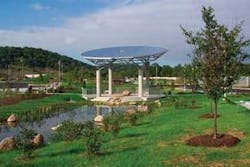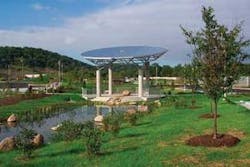New Server Cures Regional Utility’s Timeout Problems
Residents of Kentucky admire their land for its livestock and natural resources. The abundant farms in the Bluegrass State are the home of horses and agriculture that keep the Kentucky economy running strong. The rivers also run strong, as only the state of Alaska has more miles of running water.
Sanitation District No. 1 (SD1), located in northern Kentucky, provides collection and treatment of wastewater and management of stormwater for 33 communities and more than 90,000 customers. To serve a sewer system covering approximately 178 square miles, SD1 owns and operates nine wastewater treatment plants, 15 flood pump stations, 128 wastewater pumping stations and more than 1,500 miles of combined and separated sewers.
The district’s administrative office in Fort Wright is miles away from the treatment plants scattered throughout northern Kentucky. To communicate from the field, workers once relied on a Terminal Server T1 connection. This worked well for several years, but as the data transfers became more excessive, problems began to emerge.
“We were getting timeout errors,” said SD1 Network Services Manager Dane Boggs. “We needed to find a way around that.”
SD1 uses numerous GBA Master Series (gbaMS) software products for management and maintenance of infrastructure assets. The module-based, customizable applications allowed SD1 to organize and use its data effectively. Locally installing the applications on all the end-users’ computers required the data to be synchronized in the central data repository, something that is not a problem with most gbaMS clients. However, with SD1’s timeout problems, the district needed a way to transfer the data without losing Local Area Network (LAN) speed. For this reason, SD1 moved to a Citrix® server.
“When we moved to the Citrix server, we took it to the next logical step and started running gbaMS from a dedicated server,” Boggs said.
The new server allowed SD1 to install gbaMS on the server itself and install Citrix clients on all of the end-user computers. Then, any time workers needed to run a gbaMS application, they could access the software through their computer via the client. The workers’ computers use a protocol called Independent Computing Architecture (ICA) to run the application from the server. The server sends screen updates to the end-user computers, making it seem as though the applications are locally installed on all the machines.
“The execution is actually happening on the server, and the only thing that’s happening on the desktop are keyboard and mouse clicks and painting the image on a screen,” Boggs said.
This “thin” technology eliminated the timeout errors.
With the Citrix server in place, SD1 was able to use the gbaMS infrastructure asset management software on much older computers, since the end-user’s RAM was no longer an issue. Also, when gbaMS releases a software service pack, patch, or update, SD1 only needs to install it on one machine for the changes to affect all end users on the server.
Combined Benefits
SD1 Information Technology Manager Tom Braun said that together, the gbaMS software and the Citrix server provided his district with the tools it required for success.
“For us, the real benefit of gbaMS has been that it saves so much time on maintenance and centralized management,” Braun said.
Thanks to the software’s open architecture, the transition from the Terminal Server to the Citrix server was almost entirely seamless. When the new server was first implemented, SD1 initially had some minor conflicts with printing reports. However, with the help of gbaMS support staff, the problem was quickly corrected.
With everything running smoothly at SD1, the District is preparing to bring two more treatment plants online in the coming years. Braun said that SD1 hopes to use gbaMS even more in the future, and that eventually the district wants to bring all users onto the Citrix server.
To learn more about the software, visit www.gbaMS.com.



